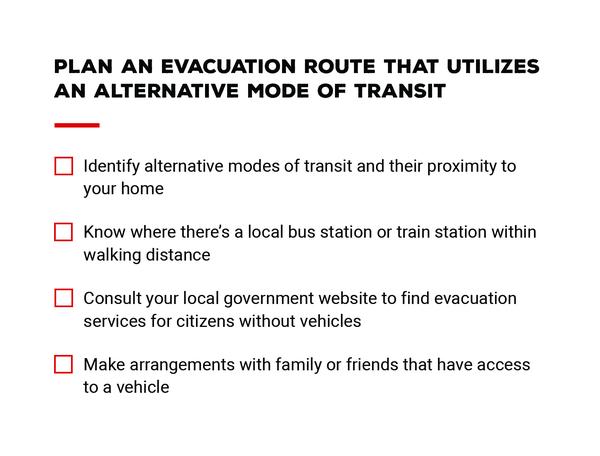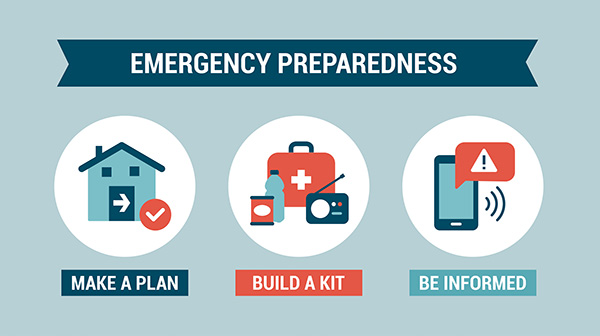Are you looking for ways to take better care of your loved ones? Do you want to ensure that your family is safe, happy, and healthy? If so, then this blog post is for you! We’ve gathered the best tips and tricks for taking care of your family and keeping them safe. Read on to learn more!

Prioritise Quality Family Time
Spending quality time with your family is one of the most important things you can do. Quality time is an opportunity to connect and strengthen your bond with each other, as well as build positive memories together.
Prioritizing quality family time doesn’t always come easy, but it is essential for a healthy home life. Here are some tips to help make quality family time a priority:
1. Schedule regular family dinners – Family dinners are a great way to bring everyone together, share stories and laugh over meals. Eating dinner together also helps children learn communication skills and practice table manners.
2. Make time for special activities – Set aside some extra time for fun activities like game night, movie night or going out on an adventure together. These activities will create great memories that will last forever!
3. Make time for one-on-one conversations – Having conversations without distractions from phones or TV shows can be difficult in our busy lives these days, but it’s important to carve out some special moments for just the two of you (or more if you have more than one child). It gives you an opportunity to really get to know them and understand their feelings and concerns better.
4. Connect online – If distance separates your family, use technology to stay connected with video calls or group chats! You can even play games online together such as board games or charades.
5. Take part in volunteer work – By taking part in volunteer work as a family, it allows everyone to contribute in helping those who are less fortunate while teaching values of kindness and generosity at the same time!
6. Create traditions – Creating unique traditions such as

Source: kajabi-storefronts-production.kajabi-cdn.com
Make Mealtime Fun
Mealtime should be a fun and enjoyable experience for everyone in the family. Kids can benefit from learning about different food groups, trying new flavors, and engaging in conversations with their parents and siblings. To make mealtime more enjoyable, try these tips:
1. Include a variety of food groups at each meal. Eating a balanced diet is important for kids, so make sure to include proteins, starches, fruits and vegetables on your plate.
2. Create a positive environment by helping children learn self-help skills like setting the table or serving themselves.
3. Let kids arrange their food in creative ways – toddlers love to rearrange things into particular orders!
4. Make sure to talk about fun parts of your day during meals – this helps encourage conversations without focusing on the food itself.
5. Involve kids when planning meals or grocery shopping so they can get excited about what’s on the menu for dinner!
6. Have fun with desserts – try making homemade ice cream sundaes or fruit kabobs together as a family activity after dinner!

Take Time for Self Care
Taking time for self care is essential for a healthy life. It’s important to find activities that make you feel relaxed, recharged and energized, as well as connecting with nature, friends and family. Self-care can range from taking a hot bath to getting a massage or going for a walk in the park.
Self-care can help reduce stress and anxiety levels, improve your outlook on life, help you manage difficult emotions and give you more energy to take on whatever comes your way. It’s also important to set aside time each day just for yourself so that you can focus on what truly matters most to you.
Creating a schedule that includes self-care activities can be beneficial in building healthier habits. Examples of self-care activities include reading, journaling, listening to music, meditating or even just taking a short nap during the day. Taking these small steps can have huge positive impacts on your overall wellbeing in the long run!

Get Organized and Plan Ahead
Staying organized and planning ahead can make a world of difference when it comes to managing your family life. With the right plan and preparation, you can keep family tasks, chores, appointments and other activities running smoothly. Here are six tips for getting organized and making your home picture perfect:
1. Create a Schedule – Schedules help to create structure in your family life. Set up times for meals, school work, errands, movie nights and other activities so that everyone has an understanding of when things need to get done.
2. Make a List – Lists are great for keeping everyone on track with their daily tasks and goals. Write down everything that needs to be accomplished each day or week so that nothing gets forgotten or overlooked.
3. Delegate Tasks – Divide up the workload among family members so that no one person is shouldering all of the responsibilities alone. Assign age-appropriate tasks to children so they can learn responsibility while helping out around the house.
4. Use Reminders – Post notes and reminders around the house where they will be seen by everyone in order to stay on top of upcoming events or tasks that need attention as soon as possible (i.e., homework assignments due dates).
5 . Have an Emergency Plan – Emergencies can happen at any time, so it’s important to plan ahead for these situations by having emergency supplies on hand such as food, water and first-aid kits in case of natural disasters or medical emergencies .
6 . Establish Routines – Establishing routines makes everyday tasks easier since you won’t have to think about them every time they come up; instead you will just do them out of

Teach Your Kids the Value of Money
Teaching kids the value of money is an important lesson that can help them make better decisions in life. Money management skills are essential for success, and teaching kids these skills early on can help set them up for a financially secure future.
The first step to teaching your kids about money is to explain the difference between needs and wants. Explain that needs are items like food, clothing, and shelter. Wants are items like toys or gadgets that would be nice to have but don’t necessarily need for survival.
Remind your children that money doesn’t grow on trees and must be earned through hard work or saved from previous earnings. Showing your children how you save and spend money can also be a great way to demonstrate good financial habits they should strive to imitate.
It’s also important to involve your children in family discussions about major purchases such as vacations or cars so they understand the importance of budgeting when making big decisions. You can even give them weekly pocket money so they can learn how to manage their own funds responsibly and plan for their future goals.
Overall, teaching kids the value of money is an essential part of their education that will set them up for their future success. By explaining the differences between needs and wants, showing good financial habits, involving your kids in family discussions about big purchases, and giving pocket money, you’ll be helping them build strong money management skills they will carry with them into adulthood.

Establish Regular Routines and Schedules
Establishing regular routines and schedules for your family is a great way to ensure that all of your family members are on the same page. It helps create structure, consistency, and accountability for everyone in the household. Routines help keep things organized and provide a sense of security knowing that everyone is following the same schedule. It’s important to make sure that the routines you establish are realistic and achievable for everyone in the family.
Start by creating a weekly visual schedule that everyone can see, including tasks or activities each person must complete throughout the week. Make sure to factor in any extracurricular activities or appointments as well as time for rest and relaxation. Analyze your day-to-day tasks to see if there are any areas where you could save time or delegate responsibilities to other members of the family. This will help ensure that no one feels overwhelmed or overburdened with too many tasks at once.
It’s also important to encourage children to take responsibility and participate in creating their own routine by giving them tasks they can do on their own such as making their bed each morning, packing their school supplies, brushing their teeth etc. Doing this will give them more autonomy while helping them feel like they are contributing to maintaining order within the family unit.
Overall, establishing regular routines and schedules can be extremely beneficial for families looking to streamline their daily lives while fostering positive habits among all members of the household.

Spend Time Outdoors Together
Spending quality time together as a family is one of the best ways to show each other that we care. Going outdoors together can be a great way to bond and create lasting memories. Exploring nature, biking, backpacking, or simply having a meal outdoors can bring your family closer together and help you appreciate the natural world around you.
When spending time outdoors with your family, it’s important to choose the best outdoor space for everyone’s needs. Your own yard is often the best option, but if that isn’t an option for you, find somewhere else where you won’t be disturbed by too much traffic or noise.
It can also be helpful to set small challenges that bring easy success when trying to build a habit of spending more time outside with your family. This will help make it easier for everyone involved and encourage them to keep going!
Finally, don’t forget about meals! Eating outside in the fresh air is a great way to break up busy days and get some quality time with your loved ones – try taking those meals outdoors when the weather is nice!
Spending time outdoors together as a family is an incredible opportunity that shouldn’t be missed – so make sure you take advantage of every chance you get!

Show Appreciation for Each Other
Showing appreciation for each other is essential in any relationship. It builds trust, security and fosters a deeper connection between two people. Expressing gratitude to your loved one can be as simple as saying thank you or giving them a hug. You can also show your appreciation through acts of service, gifts, or words of affirmation. Taking the time to recognize the little things that your partner does will help create a stronger bond between the two of you and ensure that your relationship continues to grow in a positive direction.

Encourage Open Communication
Open communication is essential for building strong relationships and creating a healthy family environment.
It allows each family member to feel heard, understood and respected, which can help to create a sense of trust between everyone.
Encouraging open communication means creating an environment where each person feels comfortable expressing their thoughts, feelings and opinions without fear of judgement or criticism.
To encourage open communication in your family, start by setting an example yourself. Speak in a respectful tone, listen without interrupting and be patient when understanding others’ perspectives. Show your children that it is okay to disagree with one another but still treat each other with respect.
Allow each family member the opportunity to voice their opinion and make sure everyone is heard without interruption or judgement. Ask questions that facilitate dialogue rather than shut down conversation. Encourage your children to speak up if they have any questions or concerns so that their voices are heard as well.
Family meetings can also be helpful in encouraging open communication as they give each person the chance to express themselves while being held accountable for what they say. Establish ground rules such as no interrupting or name-calling before discussions begin so that everyone remains on track during the conversation.
By actively listening to one another and speaking respectfully with one another, you can foster an environment of trust and mutual respect which encourages open communication within your family unit.

Have an Emergency Plan in Place
Having an emergency plan in place is a must for any family. This plan should include details on how to respond to and survive any potential disaster that may occur. To create an effective and comprehensive emergency plan, there are several steps you should follow:
1. Identify potential risks: Start by researching the types of disasters and emergencies that could potentially affect your area. This can be anything from natural disasters like floods or tornadoes, to terrorist attacks or civil unrest. Knowing the risks specific to your area will help you create a plan tailored to best serve your family’s needs.
2. Establish multiple family meeting spots: Next, identify two or three designated meeting spots in case of an emergency; one close by your home, another slightly farther away, such as a nearby park or library, and one out-of-town spot in case you need to evacuate quickly. Make sure all family members know these locations and have them written down for easy reference if needed later on.
3. Develop an communication plan: Determine which methods of communication you will use in case of emergency – cell phones, landlines, text messages – and make sure everyone has contact information for each other member of the family stored both in their phone contacts list as well as written down on paper just in case technology fails during an emergency situation.
4. Assemble a disaster supply kit: Put together a kit with items such as food rations, water bottles, flashlights and batteries, first aid supplies etc., so you can easily grab it in the event that you need to leave quickly due to a disaster. Store this kit somewhere safe but accessible at all times like a basement closet or garage corner so

Model Healthy Habits For Your Kids
Model Healthy Habits For Your Kids
Healthy habits are important for your family’s overall health and wellbeing. Teaching your children healthy habits from a young age can help them develop lifelong positive behaviors.
Start by setting a positive example for your kids. Eating nutritious meals, exercising, and engaging in healthy activities can lead to better physical and mental health. Showing your kids that you enjoy being active and eating nutritious foods can help them learn healthy habits too.
Family meals are also an important part of teaching good eating habits. Try to set aside time each day to sit down together as a family and enjoy a meal together. Talk about the food you’re eating, talk about how it’s prepared, or ask questions like “What was the best part of your day? The hardest part?” Asking questions like this will help you stay connected with your children while helping them learn good nutrition habits at the same time.
Finally, don’t forget to have fun! Playing games together or going outside for some fresh air is a great way to bond with your family while promoting physical activity and healthy living at the same time!

Practice Safety Around the Home
Practicing safety around the home is essential to keeping your family safe and healthy. There are a few important things that you can do to ensure a safe environment for everyone in your home.
First, make sure that all doors and windows are properly closed and locked when not in use. This will help protect against intruders and also keep children from wandering off while outside. Additionally, it’s important to install safety glass or apply shatter-resistant film to windows and doors of older homes. Put stickers on glass at eye level so young children don’t accidentally break them.
Second, install smoke detectors throughout your home, check their batteries regularly, and teach everyone how to respond if the alarm goes off. Also consider investing in carbon monoxide detectors as well as fire extinguishers for each floor of your house.
Third, make sure all electrical sockets are covered with childproof covers and medicines should be kept in a secure cabinet out of reach from children at all times. You should also teach your children about water safety and any other hazards they may encounter (e.g., hot stoves).
Finally, develop a memorable family code word that is only given out to family members or trusted friends for kids in your absence. By taking these steps you can help create an environment where everyone feels protected both inside and outside of your home!

Set Boundaries with Technology Use
Setting boundaries with technology use is an important part of creating a healthy and balanced lifestyle for your family.
Whether it’s setting time limits on device usage, establishing tech-free zones in the home, or monitoring the type of apps and websites that can be accessed, these boundaries can help to ensure everyone in the family is using technology responsibly.
It’s important to set clear rules and expectations regarding technology use. This will make it easier for everyone to understand what’s acceptable and what isn’t. It also helps create an environment where conversations can take place about how technology is affecting each individual within the family.
When setting boundaries, consider things like age appropriateness, how much time is spent on devices, what type of content is being accessed, who has access to devices (and when they have access), etc.
It’s also important to establish tech-free zones in your home such as not allowing phones or tablets at mealtimes or ensuring bedroom are free from devices at nighttime when it’s time for sleep. You may also want to consider using parental controls and tracking software so you can monitor usage more closely if necessary.
By taking proactive steps towards setting boundaries with technology use in your family, you will be helping create a healthier balance between our digital lives and real life connections with one another.

Help Each Other Reach Goals
Family goals can help give your family a sense of direction and purpose. They provide the opportunity for each family member to work together to achieve something meaningful. Setting goals as a family involves understanding what is important to each individual, planning and taking action.
1. Identify Goals: The first step in setting family goals is to identify what matters most to each member of your family. Everyone should have an opportunity to express their views on what they would like the family’s goals to be.
2. Plan Together: Once you’ve identified the common goal that everyone agrees on, it’s time for everyone in the family to come up with a plan of action. Brainstorm ideas on how you can reach your goal together by collaborating and compromising with one another.
3. Set Reasonable Timeframes: While it’s great that everyone has come together in agreement on their collective goal, it’s important not to set yourself up for failure by setting unrealistic time frames or expectations. Be realistic about how long it may take you to reach your goal, and set achievable milestones along the way that will help keep everyone motivated as they work towards achieving their ultimate goal together as a team!
4 . Celebrate Successes: Achieving any kind of milestone is something worth celebrating! As a family unit, celebrate accomplishments both big and small along the way towards reaching your ultimate goal! Celebrating successes can also provide an extra boost of motivation for when times get tough throughout the process – reminding everyone why they are doing this in the first place!
5 . Give Each Other Support: As much as possible, try and make sure that each person within the family has someone who they can turn too if they ever

Conclusion
Conclusion
Taking care of your family should be at the top of your priority list. It’s important to show them love, appreciation, and attention. Make sure to spend quality time with them, listen to them, and offer support whenever necessary. It’s also important to practice self-care and maintain a healthy lifestyle – this will help you remain physically and mentally strong so that you can provide the best possible care for your family. Finally, don’t forget to use available resources like counseling and support groups if needed. By following these tips you’ll be well on your way to creating a safe and supportive environment for everyone in your family.

![happy-family-cuddling-looking-at-each-other-family-values[1]](https://www.viralstories360.com/wp-content/uploads/2022/12/happy-family-cuddling-looking-at-each-other-family-values1-696x463.jpg)